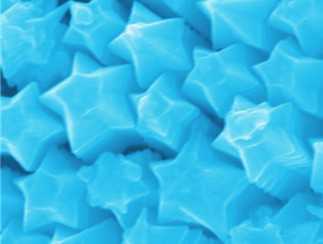Am J Pathol:调节胰腺癌细胞扩散的蛋白
2012-04-10 Beyond 生物谷
伦敦Queen Mary大学研究人员发现一种调节胰腺癌细胞“粘性”的蛋白质,研究团队已经表明S100PBP蛋白能抑制蛋白酶Z的水平,蛋白酶Z使胰腺癌细胞具有粘性,使得它们能够扩散到周围环境中。 该项研究由英国慈善机构、胰腺癌症研究基金会(PCRF的)资助,发表于《美国病理学杂志》。 Queen Mary巴兹癌症研究所Tatjana Crnogorac-Jurcevic博士说:我们相信这些结果具
伦敦Queen Mary大学研究人员发现一种调节胰腺癌细胞“粘性”的蛋白质,研究团队已经表明S100PBP蛋白能抑制蛋白酶Z的水平,蛋白酶Z使胰腺癌细胞具有粘性,使得它们能够扩散到周围环境中。
该项研究由英国慈善机构、胰腺癌症研究基金会(PCRF的)资助,发表于《美国病理学杂志》。
Queen Mary巴兹癌症研究所Tatjana Crnogorac-Jurcevic博士说:我们相信这些结果具有显著意义。这些蛋白质在调控胰腺癌细胞的附着力和侵袭到其他器官的过程中发挥重要作用,了解了这一点有助于我们开发新的预防和治疗靶标。
该研究小组发现,蛋白酶Z的生成由S100PBP调节。当S100PBP大量存在时,肿瘤细胞只表达少量的蛋白酶Z,蛋白酶Z表达的减少限制了肿瘤细胞的蔓延。文章合著者Kate Lines博士研究生表示:团队希望获得进一步的资金以便在这方面进一步开展研究,我们特别热衷于找出到底S100PBP是如何调控蛋白酶Z的水平。
研究人员希望这些新发现的蛋白质可能最终能开发出新的疗法,可以使患者预后得到明显改善。(生物谷:Bioon)

doi:10.1016/j.ajpath.2011.12.031
PMC:
PMID:
S100P-Binding Protein, S100PBP, Mediates Adhesion through Regulation of Cathepsin Z in Pancreatic Cancer Cells
Kate E. Lines, Claude Chelala, Branko Dmitrovic, Nilukshi Wijesuriya, Hemant M. Kocher, John F. Marshall, Tatjana Crnogorac-Jurcevic
Several S100 proteins are up-regulated in pancreatic ductal adenocarcinoma (PDAC), the most significant being S100P. We previously reported on S100PBP, a binding partner of S100P, that shows no homology to any described protein and whose functions are completely unknown. To determine S100PBP expression across human tissues and organs, immunohistochemistry was performed using both multiorgan- and in-house–constructed pancreatic tissue microarrays. To establish S100PBP functions, cell lines with either stably overexpressed or silenced S100PBP were generated and investigated using Affymetrix gene expression arrays and complementary functional assays. We show that S100PBP is differentially expressed in various healthy and tumor specimens, which is both cancer- and tissue-type dependent. In healthy pancreas, S100PBP is expressed in the nuclear/perinuclear region of both exocrine and endocrine compartments. In early precancerous lesions, S100PBP is translocated to the cytoplasm, whereas in PDAC and metastatic lesions, its expression is significantly diminished. The most pronounced phenotypic change after manipulation of S100PBP expression was seen in adhesion; this was significantly reduced after S100PBP up-regulation and increased after S100PBP silencing. Up-regulation or silencing of S100PBP also led to a concomitant change in the levels of the protease cathepsin Z, the silencing of which significantly reduced PDAC cell adhesion. We further demonstrate that the interaction of cathepsin Z with arginine-glycine-aspartic acid–binding integrins, specifically αvβ5, mediates the changes seen in adhesion of PDAC cells.
本网站所有内容来源注明为“梅斯医学”或“MedSci原创”的文字、图片和音视频资料,版权均属于梅斯医学所有。非经授权,任何媒体、网站或个人不得转载,授权转载时须注明来源为“梅斯医学”。其它来源的文章系转载文章,或“梅斯号”自媒体发布的文章,仅系出于传递更多信息之目的,本站仅负责审核内容合规,其内容不代表本站立场,本站不负责内容的准确性和版权。如果存在侵权、或不希望被转载的媒体或个人可与我们联系,我们将立即进行删除处理。
在此留言














#Pathol#
99
#癌细胞扩散#
86
#癌细胞#
107